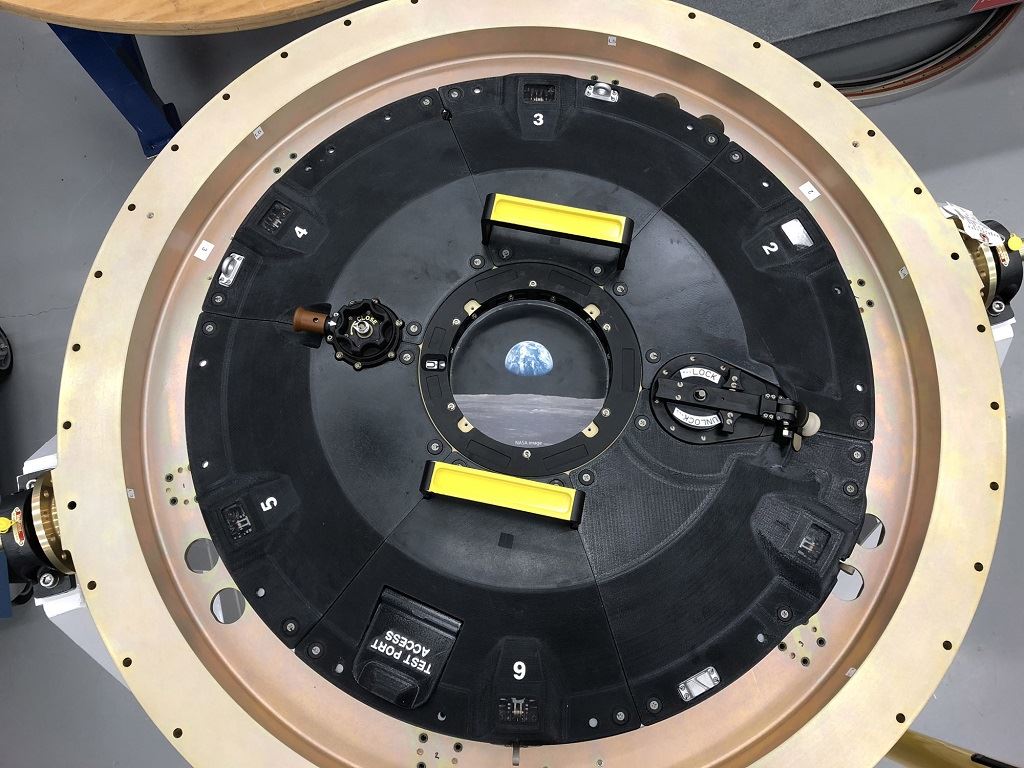![Image of NASA's Orion spacecraft — docking hatch. 3D printed in six separate interlocking parts on Stratasys machines. PEKK-based materials. [Image: Stratasys]](https://fabbaloo.com/wp-content/uploads/2020/05/OrionDockingHatchPEKK_img_5eb092cf22650.jpg)
We recently caught up with Stratasys about their work with Boom Supersonic and the discussion turned to 3D printing in aerospace more broadly.
In our conversation, Scott Sevcik, Stratasys’ VP of Aerospace, dug into the ways that Boom is putting Stratasys’ FDM 3D printing technology to work in developing its supersonic plane in prototyping, tooling, jigs and fixtures, and end-use parts.
He was also quick to point out that Boom is by no means alone among aerospace companies bringing additive manufacturing into the workflow — and there are many reasons why this industry serves as something of a bellwether for 3D printing in general.
Aerospace 3D Printing
Exploratory use of 3D printing in aerospace applications has been ongoing for some years.
While many of the specifics remain under wraps, that general statement is an easy observation.
“There have been clear, slow signs of adoption publicly,” Sevcik noted. “Look at that original Airbus seat part, made for a flight attendant seat back they could no longer procure traditionally. It was a great exploratory use, where time, cost, and risk savings were great for a legacy vehicle… Now with new aircraft and spacecraft in development, we’re seeing new interior configurations where the time is ideal for new technologies, provided they’ve shown that pedigree of provability.”
“Provability” is a good way to phrase it: aerospace has, and should have, extremely tight regulations and high standards for the parts in use and processes to create them.
Stratasys has been among those companies vocal about its work toward meeting regulatory standards with 3D printing, such as introducing its Aircraft Interiors Solution two years ago.
The company has been supplying interesting solutions across a variety of aerospace applications, from commercial aircraft to space-ready craft.
“Marshall Aerospace and Defense announced their adoption earlier this year for ground and air applications. We’re working with major suppliers who will soon have parts flying, and we’re encouraging them to tell their stories as well. They’re putting considerable efforts into qualifying their uses. You can see that with Lockheed Martin and NASA rolling out their Orion vehicle, which heavily leveraged 900 and Antero materials. They announced last year the steps they were taking with qualifying that material in crew-critical applications,” Sevcik told me.
“Really what we’re seeing right now, across the industry, are very strong signs. This recent experience with Boom being a nice vignette of that, a great example because they’re new to the industry and focusing in on doing one thing, providing great visibility for us and for others into how that adoption can move and the value it can bring.”
Introducing New Workflows
I asked Sevcik if there was something of a “poster child” part he could point to as a firm example of how Stratasys’ customers have seen 3D printing make a real difference in their operations.
It’s been an interesting journey to get to those “potser child” quality parts, though, and much of that journey is still in process.
“It’s interesting where we are in adoption because everyone is very focused on lightweighting, on topology optimization to create parts we couldn’t produce before — but that’s no one’s first part. That’s never the first thing they do when adopting the technology. You start by introducing as little risk as possible,” Sevcik said.
There are three primary aspects to consider when introducing a new process:
-
Material
-
Manufacturing method
-
Part design
Looking back to the early example of Airbus, Sevcik pointed out that ULTEM 9085 was already an in-demand material, as it was familiar from injection molding. The ability to use the same material via 3D printing offered an immediate benefit: it offered well-known, understood, quantifiable properties that had proven their value in Airbus’ applications.
“They could make the same part that had been produced in another technology, whether that was injection molding or stamping, and all that changed was the mold manufacturing process. What we see in adoption is just that: only moving one or two variables at a time. Airbus, with that example, they’ve always had the material, and now they’ve qualified the process and understand what they can do with it, so now they’re starting to entertain new designs,” Sevcik said.
Moving beyond that, he pointed to an example from Materialise where they introduced a part for the Airbus 350. The cabin part is “indistinguishable from anything else in the cabin,” he noted — but “what really struck me about the part was looking at the other side of it.” The unseen back side of the piece had a “spindly design” because the team was “now working with that other variable: how we can design differently now that we have a material and process we accept.”
Looking to space with the Orion vehicle, he added that not all the parts for it were necessarily new designs. NASA had already built experience 3D printing ULTEM, and moving to the newer Antero material offering from Stratasys allowed them to introduce new properties while maintaining trusted, established parameters.
Still, progress has been relatively limited because, again, trust is paramount in aerospace. 3D printing has many trumpeted benefits — go back to that lightweighting and topology optimization, and also think of part consolidation, new geometries, etc. — but actually using these is a leap into the deep end.
“Today a lot of parts aren’t taking advantage of all we know about 3D printing because they still don’t trust the process. That’s where we are now, at this inflection point where we’re starting to trust the process and the materials more, and are starting to create new designs,” Sevcik said.
So where are we today — and where are we going? Stay tuned for part three.
Via Stratasys











Eric Haddad is the founder and Pilot in Command of 3DAeroventures, a Texas-based outfit specializing in 3D printed RC aircraft.